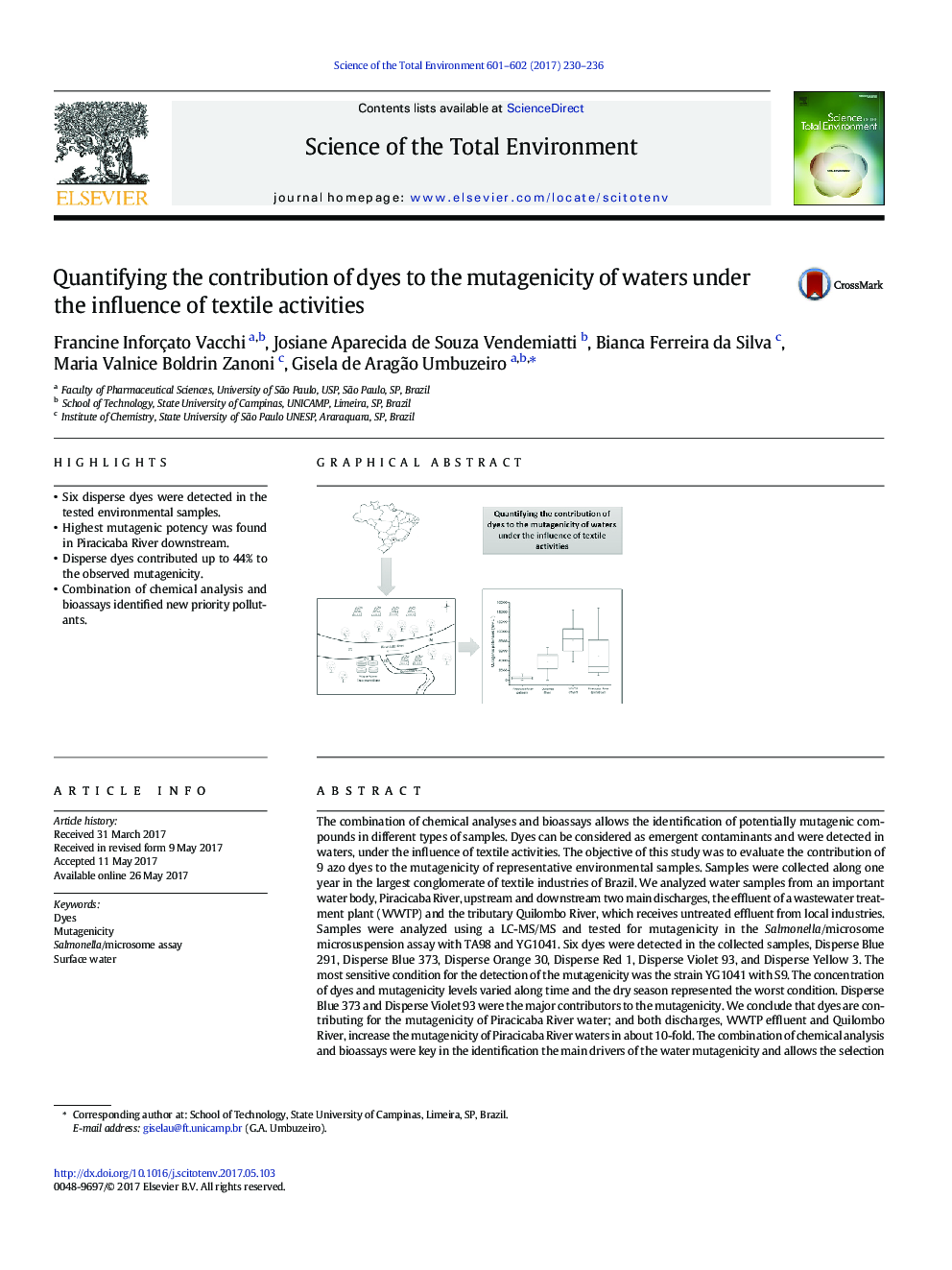| کد مقاله | کد نشریه | سال انتشار | مقاله انگلیسی | نسخه تمام متن |
|---|---|---|---|---|
| 5750381 | 1619697 | 2017 | 7 صفحه PDF | دانلود رایگان |
- Six disperse dyes were detected in the tested environmental samples.
- Highest mutagenic potency was found in Piracicaba River downstream.
- Disperse dyes contributed up to 44% to the observed mutagenicity.
- Combination of chemical analysis and bioassays identified new priority pollutants.
The combination of chemical analyses and bioassays allows the identification of potentially mutagenic compounds in different types of samples. Dyes can be considered as emergent contaminants and were detected in waters, under the influence of textile activities. The objective of this study was to evaluate the contribution of 9 azo dyes to the mutagenicity of representative environmental samples. Samples were collected along one year in the largest conglomerate of textile industries of Brazil. We analyzed water samples from an important water body, Piracicaba River, upstream and downstream two main discharges, the effluent of a wastewater treatment plant (WWTP) and the tributary Quilombo River, which receives untreated effluent from local industries. Samples were analyzed using a LC-MS/MS and tested for mutagenicity in the Salmonella/microsome microsuspension assay with TA98 and YG1041. Six dyes were detected in the collected samples, Disperse Blue 291, Disperse Blue 373, Disperse Orange 30, Disperse Red 1, Disperse Violet 93, and Disperse Yellow 3. The most sensitive condition for the detection of the mutagenicity was the strain YG1041 with S9. The concentration of dyes and mutagenicity levels varied along time and the dry season represented the worst condition. Disperse Blue 373 and Disperse Violet 93 were the major contributors to the mutagenicity. We conclude that dyes are contributing for the mutagenicity of Piracicaba River water; and both discharges, WWTP effluent and Quilombo River, increase the mutagenicity of Piracicaba River waters in about 10-fold. The combination of chemical analysis and bioassays were key in the identification the main drivers of the water mutagenicity and allows the selection of priority compounds to be included in monitoring programs as well for the enforcing actions required to protect the water quality for multiple uses.
67
Journal: Science of The Total Environment - Volumes 601â602, 1 December 2017, Pages 230-236
